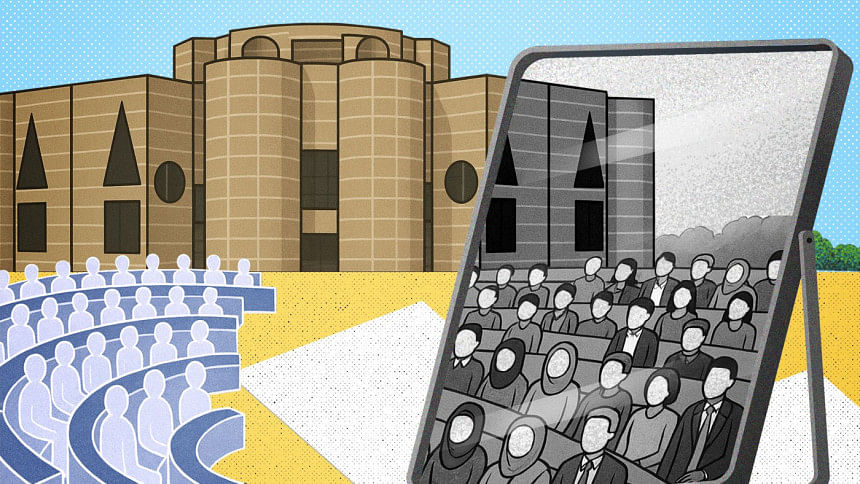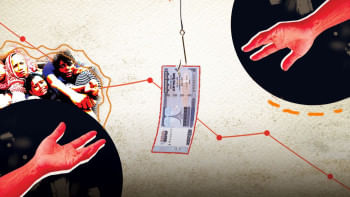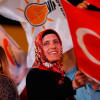Are we ready for a proportional representation system?

The interim government's reform drive, initiated last October through the formation of six commissions, has entered a crucial phase. These commissions—focusing on constitutional, electoral, judicial, administrative, and anti-corruption reforms—have submitted their reports. Now, the task of building political consensus on their recommendations rests with the seven-member National Consensus Commission, which began its work on February 15 under the leadership of the chief adviser. The commission's mandate is to facilitate dialogue and agreement among political parties on proposals that could fundamentally reshape the nation's governance framework.
One of the more contentious issues to have surfaced in recent discussions is whether Bangladesh should adopt a proportional representation (PR) system for future parliamentary elections. Political parties are divided. Bangladesh Jamaat-e-Islami has publicly supported the idea and submitted proposals to that effect. Other parties have expressed similar interest, viewing PR as a route to more inclusive governance. But the BNP has strongly opposed it. Interestingly, despite the divide over PR, there is reported convergence on other structural reforms, such as the establishment of a bicameral legislature with a 100-member upper house and the assignment of the deputy speaker's role to the opposition.
To assess the feasibility of PR, one must return to the constitution. Article 65(2) provides that members of parliament shall be elected from single-member territorial constituencies by direct election. This enshrines the first-past-the-post (FPTP) model as the basis of Bangladesh's electoral process. Any move to introduce PR for the lower house would require a constitutional amendment under Article 142, which demands a two-thirds majority vote in parliament—a hurdle that is currently insurmountable in the absence of an elected legislature.
Furthermore, the reform commissions themselves have not advocated for PR in the lower house, provided that the bicameral parliamentary model is implemented. The Constitution Reform Commission has proposed retaining the direct election model for the lower house while suggesting that the proposed upper house could be constituted through a proportional representation system (pages 51-52 of its report). Meanwhile, the Electoral Reform Commission, despite extensive consultations, refrained from making any recommendation on this issue, citing sharp political disagreement (pages 84-87 of its report). The Electoral Reform Commission recognised that any change in the method of election would require a consensus that simply does not exist at this stage.
The absence of any recommendation in favour of PR for the lower house has legal and procedural consequences. The mandate of the National Consensus Commission is confined to building agreement on the proposals previously submitted by the major reform commissions, as it was established specifically to foster consensus around those earlier reform recommendations. Since the relevant commissions have not proposed PR for the lower house, this issue technically falls outside the scope of the current dialogue. More importantly, the Constitution Reform Commission has in fact proposed preserving the existing direct electoral system for the Jatiya Sangsad. It would therefore be institutionally inconsistent and procedurally misplaced for the National Consensus Commission to entertain a proposal that contradicts the reform roadmap already submitted.
This, however, does not mean that the conversation about PR is unwarranted. As a theoretical model, PR has several merits. It promises to reduce the distortions produced by FPTP, under which a party can win an overwhelming majority of seats with a far smaller share of the popular vote. It offers a more inclusive framework, potentially giving smaller and emerging parties a fair chance at representation. It can encourage coalition politics, reduce political alienation, and better reflect the diversity of public opinion. In principle, PR systems also allow for greater representation of women, religious minorities, and other underrepresented groups. Unlike the existing system, which reserves seats for women through indirect party nominations, a well-designed PR system could enable women to be elected directly from party lists. Many countries that have adopted PR, such as Sweden, Nepal and South Africa, have seen marked improvements in the descriptive and substantive representation of marginalised groups.
Yet any electoral system must be judged not in isolation but within the context in which it is to operate. Bangladesh's political culture is highly polarised. Its democratic institutions remain fragile. Electoral processes have been repeatedly marred by violence, boycotts, and allegations of irregularities. In this context, PR might introduce new complexities rather than resolve existing ones. Far from encouraging stable coalition governments, it could lead to fragmented parliaments filled with single-issue or regionally entrenched parties, making coherent governance difficult.
Another concern is institutional capacity. Implementing PR would require significant administrative reform, voter education, and legislative clarity. Public understanding of how votes translate into seats would need to be built through large-scale civic education programmes. Without careful preparation, the transition could create confusion and mistrust, further damaging an already strained electoral system.
Even among civil society, support for a blanket introduction of PR in the lower house is limited. Recently, 60 eminent citizens publicly called for a PR-based upper house to enhance inclusion and accountability. However, they were cautious about replicating that model for the lower house, fearing legislative gridlock and excessive fragmentation. Their view aligns with the Constitution Reform Commission's recommendation: preserve direct elections in the lower house but use PR for the proposed upper chamber to ensure a balance between local representation and proportional fairness.
That, perhaps, offers a way forward. Bangladesh could consider a mixed electoral system in the future, combining FPTP and PR models. Such systems are used successfully in countries like Germany and New Zealand, where some parliamentary seats are filled by direct constituency vote and others by party list based on national vote share. Alternatively, Bangladesh could introduce PR incrementally, first at the local government level or in a newly created upper house, allowing for institutional adaptation and political learning.
For now, however, the road to a PR system in parliamentary elections remains closed—legally, politically, and procedurally. The current constitution does not allow it. The reform commissions have not endorsed it. The political consensus required to amend the constitution is absent. And the mandate of the National Consensus Commission technically does not extend to issues beyond the submitted reform proposals.
It is tempting, in moments of democratic disillusionment, to look for structural fixes. But electoral systems are not magic wands. Their effectiveness depends on the political culture, institutional maturity, and level of public trust within which they operate. PR may well be a worthy goal for the future. For now, Bangladesh must focus on restoring the credibility of its existing system, ensuring free and fair elections, and gradually building the conditions under which more ambitious reforms like PR could eventually take root.
Khan Khalid Adnan is a barrister in England and Wales and an advocate of the Supreme Court of Bangladesh. He also serves as the head of the chamber at Khan Saifur Rahman & Associates.
Views expressed in this article are the author's own.
Follow The Daily Star Opinion on Facebook for the latest opinions, commentaries and analyses by experts and professionals. To contribute your article or letter to The Daily Star Opinion, see our guidelines for submission.

 For all latest news, follow The Daily Star's Google News channel.
For all latest news, follow The Daily Star's Google News channel. 






Comments